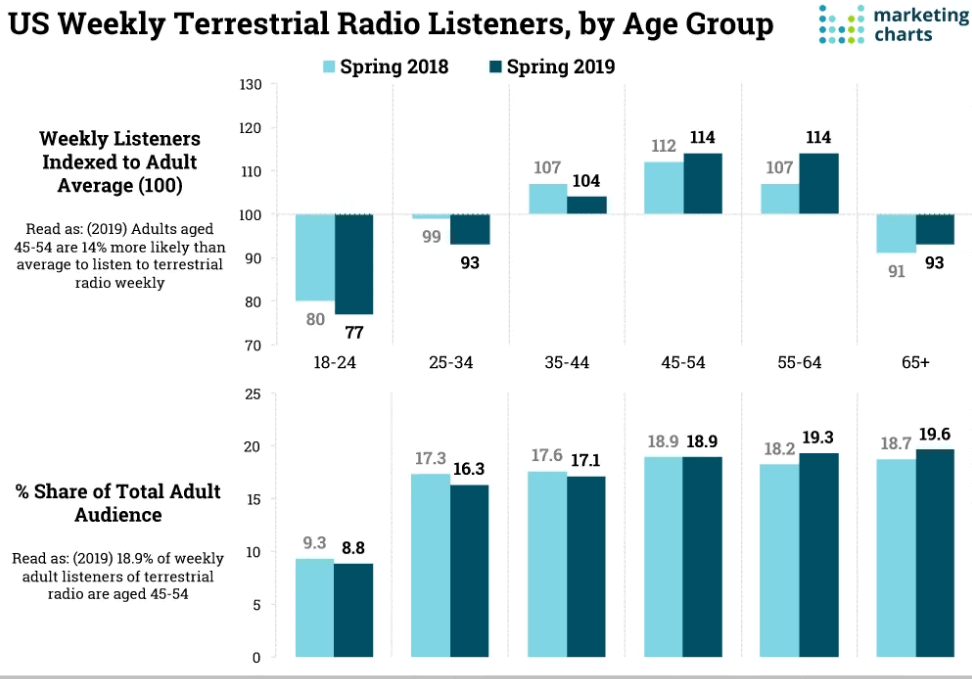MARKETING
How to Create a Marketing Campaign from Scratch

Creating and executing a marketing campaign is hard work, but it takes a lot more than hard work to make it successful. You need a superb understanding of marketing, proper knowledge of the company’s market and industry, good command of advanced digital tools, access to customer data, and a talented, enthusiastic creative team that can turn all this knowledge and info into well-targeted, engaging marketing messages.
Of course, you never actually start your marketing campaign from scratch, as there’s always an underlying brand image you need to use as a starting point and inspiration. Campaigns are, so to say, separate entities in the marketing universe, but they always need to fit in seamlessly with the rest of the marketing activities of a certain company.
Nevertheless, taking up work on a brand new marketing campaign does feel a bit like starting from scratch and can be somewhat overwhelming initially. So let’s examine, step by step, what you need to do in order to create a successful marketing campaign.
Set measurable goals
First of all, you need to know what you’re looking to achieve, and this is exactly what separates a certain campaign from all your other marketing activities – it has specific goals that need to be fulfilled in a specific period of time.
Now, too often, business owners and executives use only one criterion to make decisions about marketing campaigns. And that criterion is whether it will “pay off”. They look for quick, short-term results in terms of boosting their sales and revenue and they tend to be reluctant to spend money on a campaign that won’t generate immediate returns.
However, a marketing campaign can have a wide range of different goals, and not all of them are supposed to bring instant cash. Surely, some of them are there to bring instant cash – if you’re doing a super-targeted Black Friday sale campaign the only outcome that will prove its worth is an increase in sales in a very specific and very short time frame.
Nevertheless, this is not always the main aim of a campaign. So in order to know how to devise it, you need to know which specific goals you intend to achieve. These can be various:
- Increasing brand awareness
- Improving brand image
- Boosting online visibility
- Growing your email list
- Advertising an event
- Promotion of a particular product or one of its particular features
- Generating leads
- Nurturing leads
And the list can go on and on. And basically, whichever of these you go for there will be projected financial benefits for your business somewhere along the way. But these sorts of benefits don’t have to be the primary goal.
Once you have the goals defined you need to have quantifiable targets you wish to reach. For instance, if you’re generating leads, decide how many leads you wish to get out of the campaign and define a scoring model for them so you can determine their quality. Marketers usually use the S.M.A.R.T. method to create their goals. This means that they need to be specific (S), measurable (M), attainable (A), relevant (R), and time-bound (T). This method should be a good starting point for setting the goals for your marketing campaign.
Structure a budget
Once you have determined your desired goals, your marketing team should be able to tell what they need in order to achieve them, in terms of content, tools, and paid promotion. And of course, how long it will take them.
It’s sometimes very difficult to pin down the exact costs in these early stages of the campaign. Especially if you don’t have an in-house team that knows your company well and that understands your market and your initial position. However, a rough estimation of total costs should be given as soon as possible so you can readjust your goals if needed before you get to actual work.
Have in mind that it’s much more difficult to get significant results for newer and smaller businesses. Once you surpass a certain threshold of visibility things get easier, but you’ll need to invest a solid proportion of your budget to get to this threshold. On average, small businesses allocate around 11% of their total budget to marketing, which may seem like a bit much to some business owners. Here are some of the top spending priorities regarding marketing:

Source: https://hookagency.com/
Luckily, we live in an era where small companies have great promotional tools and resources at hand. It’s easier than ever to find and engage their target population so this money hopefully won’t go to waste.
Identify your target population
Speaking about the target population, this is exactly what your next step should be. Unless you’ve just started your business, you should have a pretty good idea about who your customers and prospects are. Still, having a “pretty good idea” on the one hand and having detailed, actionable insights about the demographics, needs, and online behavior of your target market on the other are two completely different things.
That’s why you need to conduct thorough market research before deciding who exactly you’ll be targeting with your campaign. For this, you’ll need a lot of data. Fortunately, you don’t need to look too far to get a ton of customer data these days. Taking advantage of the analytics offered by social media and collecting customer info from your website with the help of a solid CRM system is already a great start.
Furthermore, you need to think about whether you’ll be trying to appeal to your entire target market or just a particular chunk of it. The latter may be the case when advertising only certain products or certain features of products or when you’re looking to grow your audience at a particular social network typically used by specific demographics. In these cases, you probably shouldn’t waste your money trying to reach people that don’t have much chance of being interested in what you offer and go for a more focused, narrowly-targeted approach.
Remember, identifying your target population is a huge step. It determines all your next moves – your creative approach, content, and ad distribution, as well as your paid promotion strategy. Having a talented, creative team, and a whole bunch of marketing experts to execute your campaign will mean nothing if the messages they create are delivered to the wrong audience.

Choose appropriate channels
Next up, you need to decide which channels you’ll use to get your messages through to consumers. Today you have a whole bunch of options to choose from, based on who you’re targeting, what you’re trying to achieve, and how much money you’re ready to spend. Let’s take a look at some of the main channels you can use for your campaigns.
Traditional media
Very often, when marketers speak about campaigns, they tend to limit the subject matter to digital campaigns, completely ignoring the power of traditional media. And the truth is, they are very much alive. Billboards, print, as well as TV and radio ads still play a huge role in marketing and they have the power to reach a very broad population in no time.
![]()

Source: https://www.marketingcharts.com/
![]()
However, a lot of businesses, especially smaller ones see them as a waste of money, since they’re completely indiscriminate and the truth is that they will get your brand in front of a lot of uninterested eyes. And you’ll still have to pay for the minutes. In terms of getting exposure, they’re still great, but if you prefer to focus your marketing efforts on a particular population and engage them, then there are probably better choices for you.
Social media
Social media marketing can help you achieve excellent results exactly in those areas where traditional media fall short. Social media marketing has become one of the staples of all the major digital marketing courses, from Google to HubSpot. They’re quick, flexible, interactive, and they can help you improve communication with your customers. Branding possibilities on social media are endless, as companies can use them effectively to show a more humane face and work on building their brand image every single day.
Also, they offer piles of very useful customer data and great targeting possibilities that go with these. Moreover, have in mind that every social network has specific dominant demographics, and businesses tend to take advantage of this. Once you get to know the prevailing age, gender, education, or income of users of a certain network, you’ll have a better idea whether you should focus your efforts on it or take your money elsewhere.
Email campaigns may not be the hottest topic in digital marketing anymore, but in truth, they can still be very efficient. Numbers definitely speak in favor of email – it still has a greater number of users than any social network, a big proportion of people still check their email first thing in the morning, and, most importantly, email marketing delivers much higher ROI and conversion rates than social media.

Source:https://www.campaignmonitor.com/
If you choose to go down this road, it’s important to collect relevant data on your subscribers and carefully segment your email list so that your messages reach the right people and that your future emails don’t end up in spam folders. People get too many promotional emails every day, so in order to avoid chasing your subscribers away, make sure they’re actually interested in what you have to offer.
Website
You should look at your website not only as a place to sell products but also as a place where you can bring value to the consumers… to whom you may sell your products later on. Your website is perfect for any kind of content marketing campaign, which can be a very powerful branding tool and a great magnet for people interested in your branch.
Quality content marketing can also help you boost your SEO and make it easier for users to find you, especially for those asking questions related to your industry or searching for products similar to yours. Your website should be the center of all your digital marketing operations and as such will be a vital part of many of your marketing campaigns.
Video platforms
You don’t need to be a marketing expert to notice a huge rise in the amount of video material produced and viewed every day. Fast connections, large bandwidths, and cheap equipment are the main causes of this phenomenon, and the consequences it has on marketing are more than significant.
The numbers that video marketing delivers are unreal. For instance, a video on a landing page can increase conversions by 80% and more than 90% of shoppers claim to have discovered a brand or a product through YouTube. The video format is very convenient for all sorts of content – product demos, how-tos, tutorials, and many others that you can use to promote your product and add value to the viewers at the same time.
If you plan to include video platforms in your campaign, hiring influencers may be a good idea. Namely, 6 in 10 YouTube subscribers would rather follow advice on what to buy from their favorite YouTuber than from their favorite TV or movie personality. And it seems that all these numbers are only going to rise in the close future.
Creative work
Now we come to the creative part of a campaign. The scope of creative work that can be done in a marketing campaign is virtually infinite. It includes writing copy for ads or blogs, designing visuals, writing scripts, coming up with innovative ideas to engage your audience on social media, and much much much more.
Naturally, it’s impossible to write a detailed guide on how to do creative work for a marketing campaign, as this will depend heavily on the nature of a campaign in question. Also, different creative processes work best for different teams and there’s no single recipe for success here. Nevertheless, there is a trick or two you should have in mind and that could help you additionally boost your campaign.
Focus on your unique selling proposition (USP)
Now, a marketing campaign can have various goals, so what you’ll focus on regarding your product or your brand depends on many factors. However, it’s safe to say that most of the time the best approach is not only to highlight what’s so good about your product, but what makes it unique and better than all the others.

Source: https://charmaintsf.medium.com
In order to do this, you’ll need to conduct a detailed competitor analysis and check what bothers consumers about their products. Identify areas and features that’d make consumers choose what you have to offer over what your rivals have to offer. By building your campaign around these features and emphasizing them in your messages you could gain a crucial competitive advantage.
Be consistent
A marketing campaign is a series of marketing activities separate from your everyday marketing operations and it does have its own identity of a kind. But you should still try to make it as consistent as possible with your other marketing efforts, in terms of design, messages you send out, the voice you use, and the values you promote.
A truly effective campaign is one that achieves previously set targets and at the same time fits in your overall brand image. People may find certain elements of your campaign interesting, appealing, or funny, but if they don’t associate it with the brand that stands behind all these elements, the campaign may turn out to be useless for your business.
Think outside the box
Obviously, being consistent doesn’t mean playing it safe all the time. You can be consistent and still try new tricks every now and then. Safe plays may give you decent visibility and will often help you reach your targets, but just a little bit of risk can make a real difference and bring massive exposure.
So try standing out and showing why you’re different not just with your product but also with the way you do marketing. And just to be clear, this doesn’t mean cheap shock-based gags, because they don’t make a difference in the era of clickbait. It just means that if your marketing team wants to try something new and different, and they have a good feeling about it and it can’t bring any real damage to your brand – you should probably go for it.
Track, measure, adapt
Finally, in order to determine if the campaign is on the right track, you’ll need to continually monitor its performance. Set some benchmarks and regularly check if you’re meeting them. If you’re not, try to analyze the causes for that together with the team, and don’t be afraid to make modifications if things are not going as planned. Of course, you shouldn’t necessarily change your entire approach after the first results that appear underwhelming, but that’s actually why you need to conduct a thorough analysis so you can figure out exactly what’s going on.
Also, don’t be surprised if you have to revise your budget a couple of times during the campaign. Obviously, you shouldn’t just throw money away on everything the marketing team suggests, but have in mind that sometimes not spending an additional dollar or two when it’s needed can cost you much more than this small, timely investment. Marketing campaigns have a life of their own, they grow, change, and evolve, so being able to adapt to new circumstances can be absolutely essential for their success.

Daniel Bishop
Share this Post
